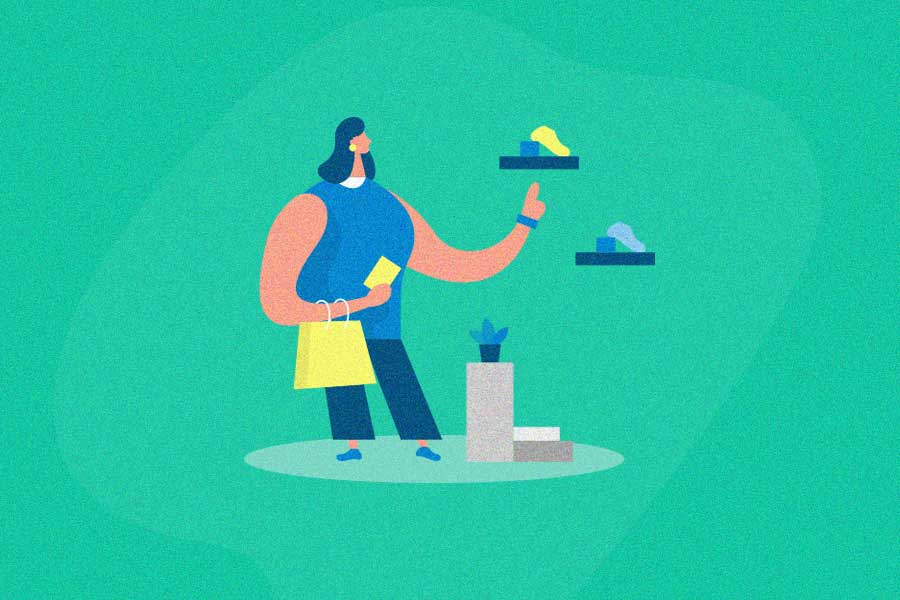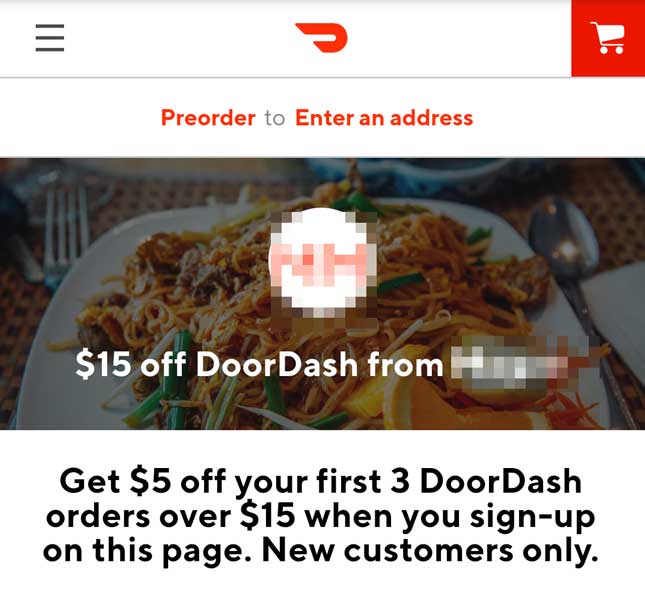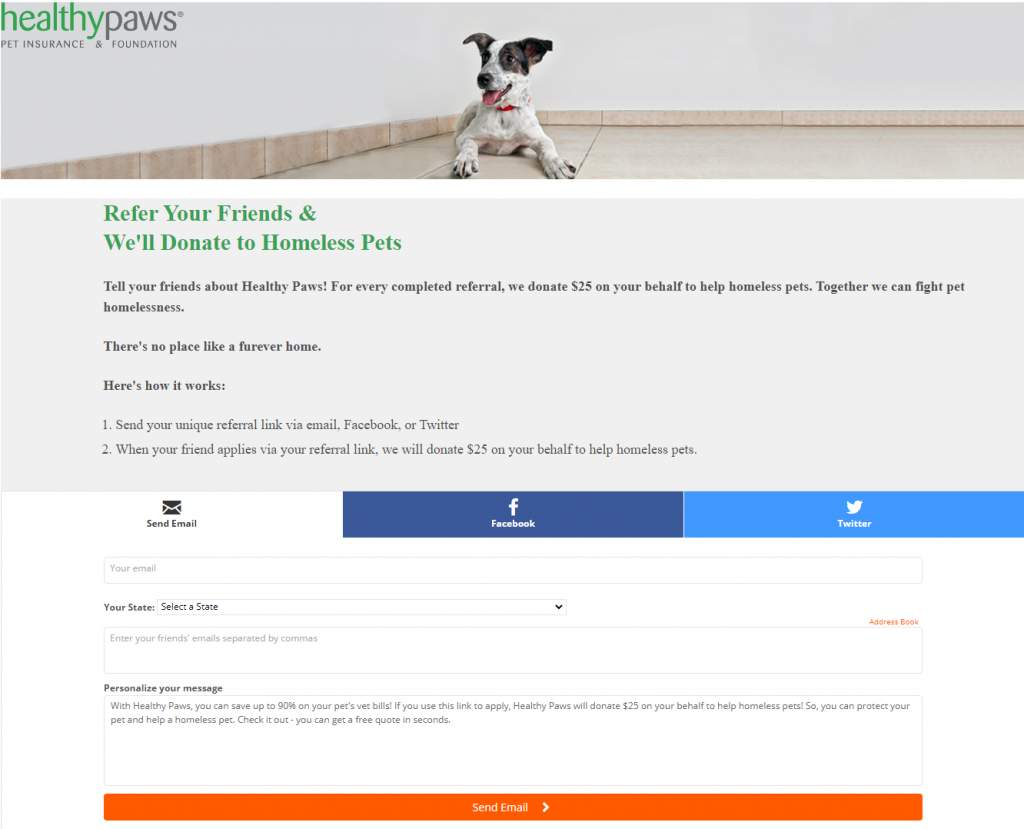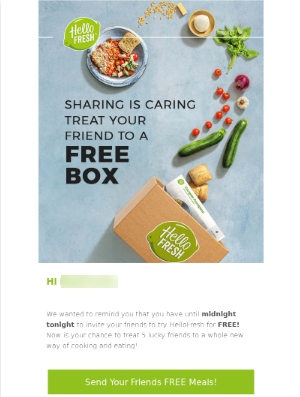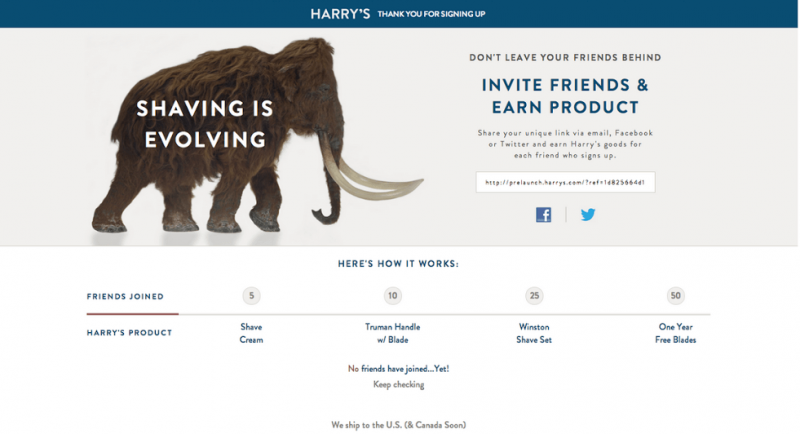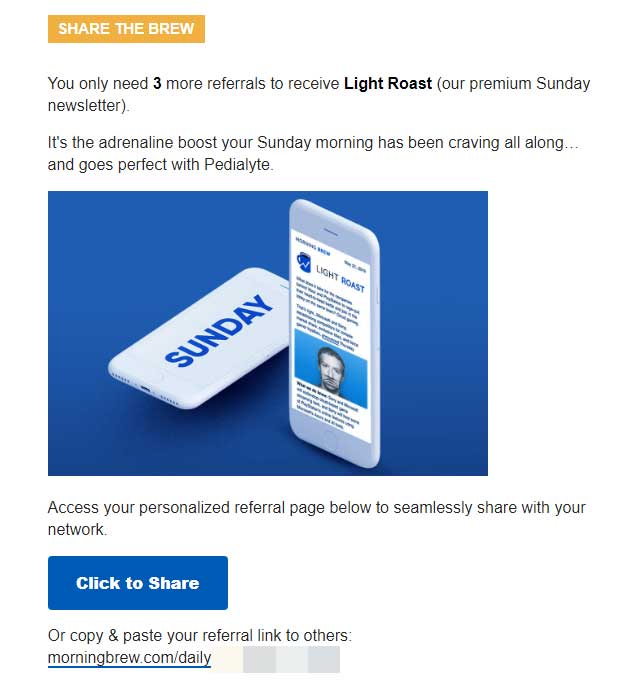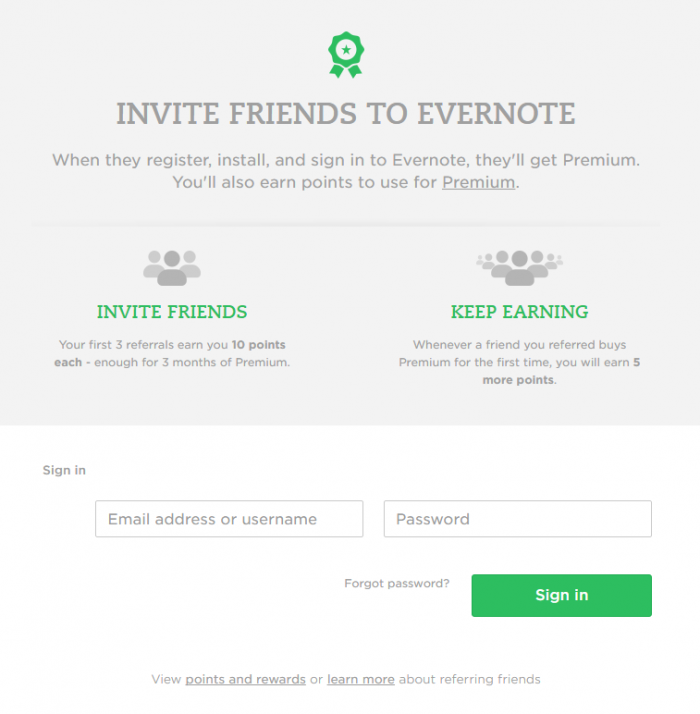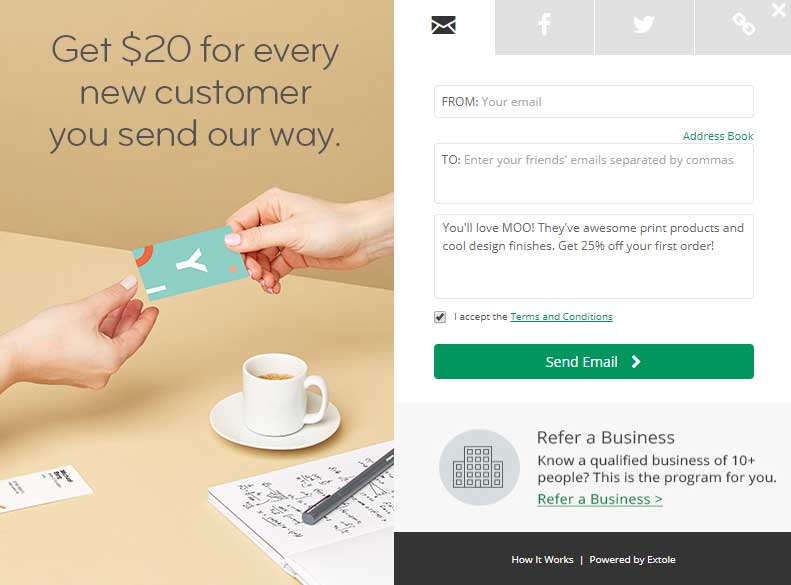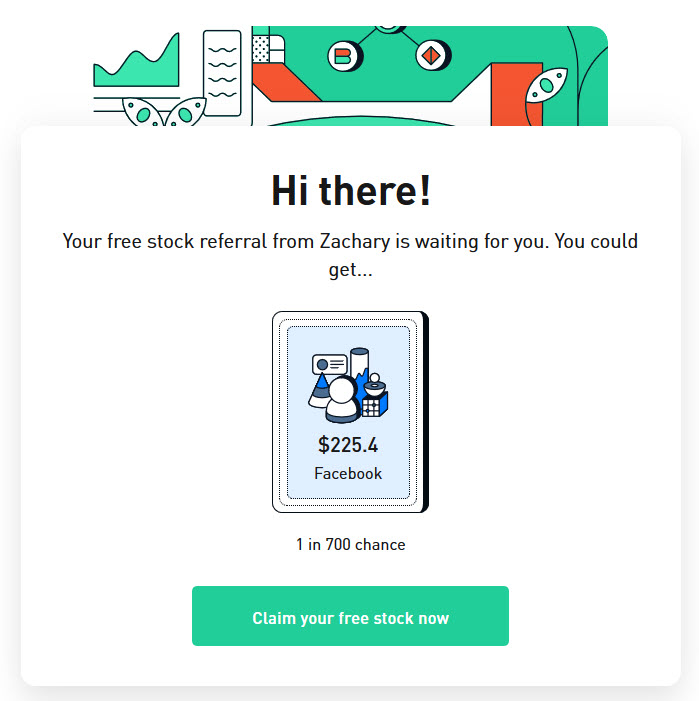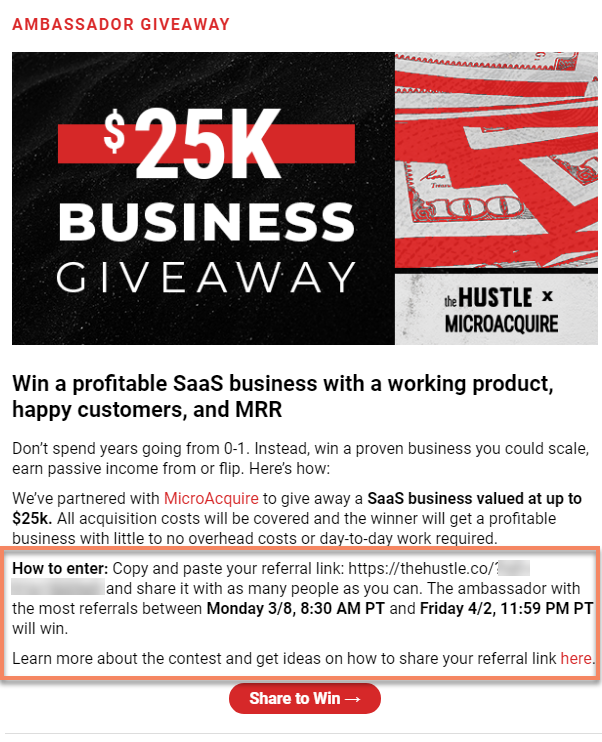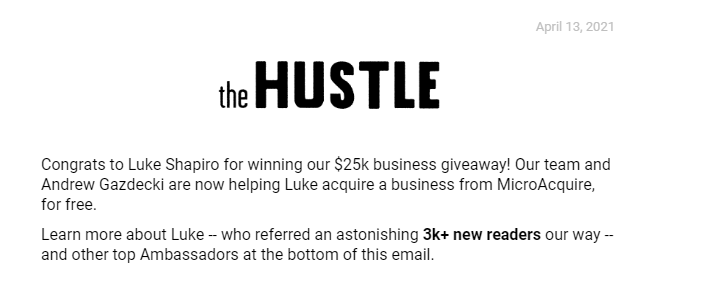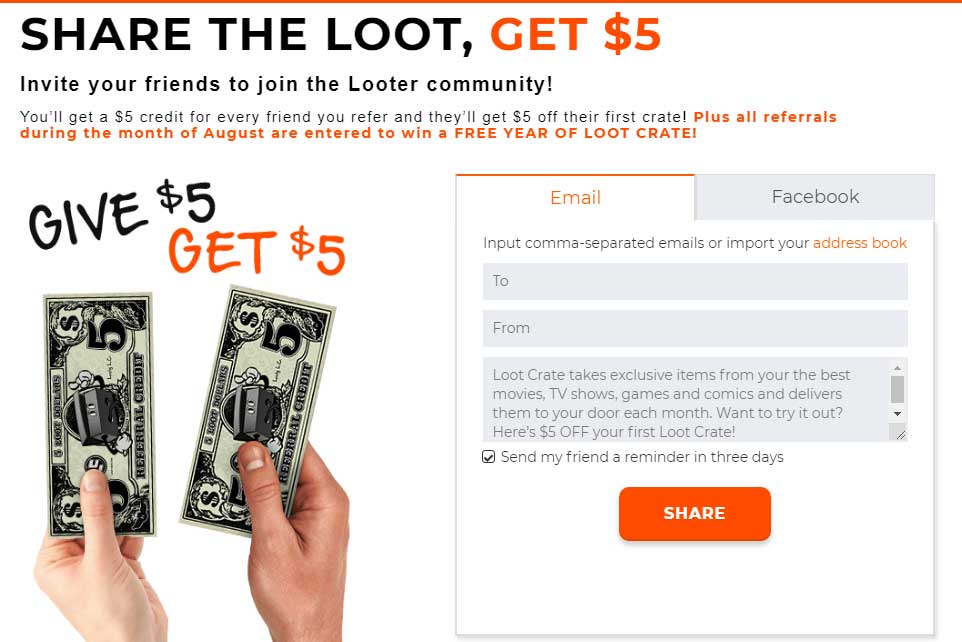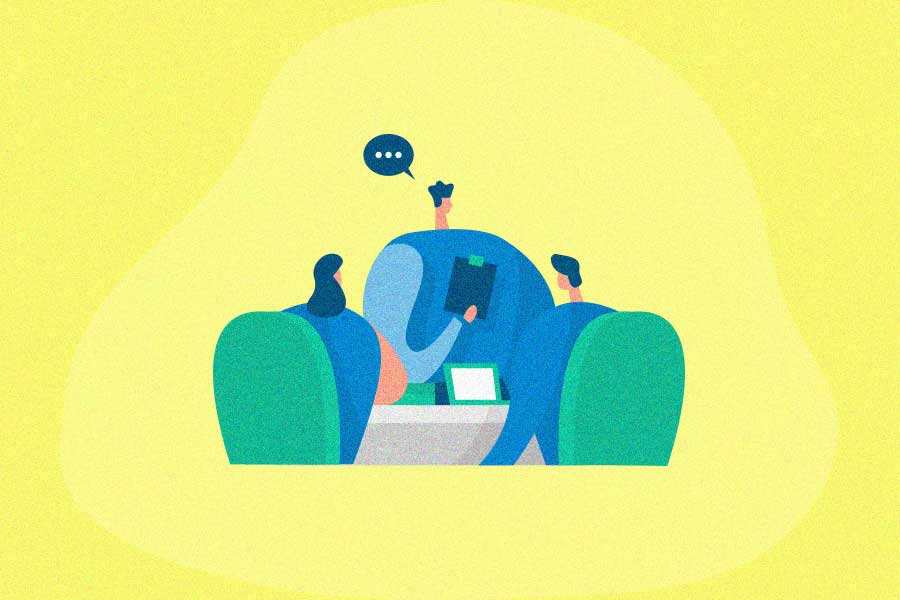Refer-a-friend programs are popular for bringing in more customers and building trust. But not every referral program idea is a success.
A refer-a-friend program invites current customers who already use your brand to share it with their friends and family. Thanks to the existing trust and relationship, this type of program is one of the most effective marketing strategies.
How successful are refer-a-friend programs?
Does refer-a-friend work?
Successful customer referral programs, like those from Dropbox, Uber, Airbnb, and Tesla, prove that the answer is a resounding yes. As long as you follow best practices.
When done right, a refer-a-friend campaign (also called a bring-a-friend campaign or tell-a-friend campaign) can maximize word of mouth, accelerate customer acquisition, and foster customer loyalty – all thanks to social proof.
These statistics reveal just how well a referral marketing strategy works:
- 90% of people trust brand recommendations from their friends, family, and peers, but only a third of consumers trust ads (according to Nielsen)
- 20-50% of consumers are primarily influenced by word of mouth when making a purchase (according to McKinsey.
- A study by Ogilvy and Google found word of mouth’s influence to be even higher, at 74% of total consumers
How do I start a refer-a-friend campaign?
A refer-a-friend campaign requires some existing components in order to be successful. Namely, a good product or service and a base of happy customers.
If these are in place, you can start planning for your a refer-a-friend campaign.
To establish and maintain a successful refer-a-friend campaign, be sure to follow these best practices:
- Have an idea for your referral program. Will you be rewarding customers with cash or freebies? Will you offer rewards for every single referral? It helps to have a general idea in mind to guide your marketing campaign.
- Select refer-a-friend campaign rewards that best motivate your customers to share your brand. (We’ll dive into the best campaign incentive ideas and why they work below. )
- Make sure your refer-a-friend campaign is easy to find. Customers should be able to refer their friends in as few clicks or taps as possible.
- Know when to ask customers to refer a friend. (The best time to ask is usually when customers are happiest.)
- Design the referral experience. Let customers choose from a variety of marketing channels and give them a unique referral link they can easily share.
- Promote your refer-a-friend program, and encourage viral sharing, by integrating social media into your campaign.
- Use referral marketing software (such as our own Referral Rock software!) to track your referral progress and conversion rates.
Top 10 refer-a-friend promotion ideas: Rewards that work
One of the key factors in referral marketing success is the reward. What incentive should you offer customers who join your refer-a-friend program? The best referral rewards are ones both attractive and valuable to your customers.
Below, we round up ten of the best refer-a-friend promotion ideas, or referral bonuses, along with referral program examples that use them. Read through and see how to apply some of these strategies to your own bring-a-friend campaign.
1. Store credits or subscription credits
Credit-based referral programs are especially good for businesses selling digital products, like software, courses, or ebooks. Depending on your product, it might not even cost you a single penny.
Why this campaign works:
Store or subscription credits attract customers who want to save money and encourage them to continue buying from your business.
This type of reward also doesn’t cost much, as the credit goes toward part of a total purchase.
For many digital businesses, the expense is already baked into your operations or product. But for customers, store credits are still very valuable.
2. Donations to charity
Choose a charity your business and your market demographic are passionate about, and pledge to make a donation on the customer’s behalf for every referral.
For example, pet insurance company HealthyPaws donates to charities that fight against pet homelessness whenever their customers refer a friend.
Why this campaign works:
Customers are becoming increasingly committed to make a positive change in the world and their community. And they’re more than willing to support businesses with the same commitment.
It doesn’t take too much effort for customers to participate in your refer-a-friend program. But adding a social, charitable reward may be the motivation your customers and their referrals need to spread the word.
3. Social gifting
While social gifting has been a long-established practice, it’s seen a resurgence in refer-a-friend marketing campaigns.
Social gifting works as a one-sided incentive, encouraging your customers to give a reward to their friends and promote a brand they love (you!). This reward could be a discount coupon, a free product, a gift card, or anything else directly related to your business.
In social gifting, the existing customer (the referrer) doesn’t get a reward. Instead, the new customer (the referred friend) receives all the benefits.
If you decide to use this referral program idea, highlight the social gifting aspect in your referral messaging. For example, something like “Share the love” or “Give to your friends” can ignite the desire to share.
However, be careful when offering steep discounts in your rewards program. Referrals (who turn into new customers) can get used to buying only if they get a big discount.
To prevent this from happening, you can limit the number of social gifts a customer gives out or set an expiration date for when the discount can be used.
You can also reward the new customer with the same social gift for their friends and family members, which generates a sense of giving back and even more referrals in the long run.
Why this campaign works:
Why would anyone refer others without a reward? This social gifting concept is based on the human desire to share an experience with others, or simply share something too good to keep to themselves. When customers feel your product is worth sharing or will benefit their friends, they will actively participate in your refer-a-friend campaign.
4. Tiered referral rewards
Tiered refer-a-friend programs offer larger rewards with every successful referral. This means the customers who are most active in the refer-a-friend program are most likely to reap the greatest rewards.
Razor company Harry’s used this strategy when they first launched their ecommerce site. They offered tiered rewards, ranging from free shaving cream to an entire year of free blades. And they received an amazing response – 100,000 emails gathered in a single week!
You can also apply this tiered reward approach to discounts. For example, your refer-a-friend program can offer 20% for the first five referrals a customer sends, and then 40% for every succeeding referral.
Why this campaign works:
The opportunity to earn more valuable, stacked rewards for larger amounts of referrals is extremely enticing, and has the potential to create super-advocates. Plus, in most tiered structures, customers are shown a progress bar indicating how many referrals they need to get to the next tier. This added motivation works almost like a game.
5. Exclusive memberships
Elevate your refer-a-friend program by offering exclusive perks for customers who are bringing in the most referrals. Invite these select customers to a special club with exclusive benefits, such as early access to store sales, free products, or invitations to VIP events.
If you sell software or other digital products, you can add an element of exclusivity by offering premium add-ons or priority customer support for a period of time.
One example of a refer-a-friend campaign that offers an exclusive reward is The Morning Brew’s newsletter. Once a subscriber reaches a certain number of referrals, they will immediately be put on the list for the company’s premium Sunday newsletter – for free.
Why this campaign works:
Exclusive rewards can motivate even more referrals, and spice things up for your best-performing customers. It’s a win-win situation because customers will jump at the chance to gain access to an insider experience, and you’ll create even stronger customer loyalty.
Plus, this exclusive membership can grow along with your referral marketing program. For example, you can create top-tier rewards even within your club, and offer even greater rewards for the top 10 or 20 members.
6. Service upgrades
Offering service upgrades is another great way to grow your loyal customers. Say, you’re a SaaS business interested to launch a refer-a-friend program. You can reward customers for every successful referral with a free month’s upgrade to your premium package (similar to Evernote below). Or you can offer them free storage space or limited-time access to your premium plan.
Why this campaign works:
Service upgrade incentives don’t cost anything extra to your business, but are effective in attracting customers to join your refer-a-friend campaign. Plus, when someone has had a taste of the upgrade, they’re more likely to keep referring friends or pay for your premium service (or both).
7. Repeated reward incentives
Consider offering the same simple referral rewards (such as cash back, discounts, or store credit) after a given time frame. Let’s say a customer invites ten new referrals in a single month, and you reward them with credit or discounts. If they continue referring others to your company, you can continue giving them the same reward every month.
In the example below, design and print company MOO offers its customers $20 for every qualified referral. Customers are entitled to a maximum of 500 referrals (up to $10,000 in earnings!) per year. This opportunity automatically renews at the start of each year.
Why this campaign works:
Oftentimes, the simplest referral incentives are all a customer wants. Give them the opportunity to keep earning these benefits with every successful referral, and/or on a recurring cycle, and you’re on your way to creating a growth engine.
8. Surprise mystery rewards
Attracting customers with a specific reward is a popular referral strategy. But throwing in a surprise mystery reward can drum up a customer’s excitement.
For example, Robinhood, an investment and trading mobile app, gives users a surprise reward stock whenever they send a referred customer. This added a fun and potentially high-value motivation for users to share the app with their friends.
Mystery gifts are best offered to the existing customer who is referring others, rather than the new customer who has been referred to your business. New customers are still getting used to your product and service, and adding a random reward can be a bit confusing.
Why this campaign works:
Mystery rewards are a great promotional tool because they keep customers wondering what their reward will be. And if the reward is really surprising, the referral experience will likely to be shared by customers on social media or through word-of-mouth marketing.
Plus, mystery rewards give you the freedom to experiment. You can offer a wide range of incentives and see what works best.
Of course, when you say something is a surprise mystery reward, you’ll need to deliver a reward worthy of anticipation. Think of a reward that will get your customers saying: “I just received X, what did you get?” or “If I refer a friend, will I get a reward that awesome, too?”
9. Referral contests
Running a referral contest is another way to get customers excited to join your refer-a-friend campaign. Just like any contest, this works best when the prize is a high-value, sought-after product or service. For example, the latest smartphone, tickets to an upcoming show or concert, or even the rights to a new business (as The Hustle offered in their newsletter referral program).
A good idea with contests is to also offer secondary prizes. Some customers might not be able to reach the big reward, and a consolation prize (i.e., gift cards, prepaid credit cards, discounts, swag) to the next 20–50 customers can be a great way to continue encouraging referrals.
For refer-a-friend programs with a lot of participants, consider setting different reward categories. For example, you can reward customers or influencers with the most shares on social media, customers with the highest number of referrals for a specific product, and so on.
(You could also hold a raffle drawing, where every successful referral gives customers an entry to win the big prize. But we find refer-a-friend contests are more effective in motivating customers to make referrals.)
Why this campaign works:
“Make the most referrals” contests are like tiered rewards, in that the opportunity to earn a significant reward for large amounts of referrals creates super-advocates.
10. Gamified rewards
This bring-a-friend campaign idea is actually a hybrid, as it combines several different reward structures. Just like many addictive games and apps, a gamified refer-a-friend campaign invites a customer to go through levels – the more referrals they make, the more rewards and achievements they unlock.
Loot Crate, a subscription box for gamers, tied gamified rewards into its referral program. Not only do customers get $5 for every referral, they also become eligible to win a free year of Loot Crate.
Why this campaign works:
Mobile games are addictive! This type of refer-a-friend campaign draws on the serotonin-boosting elements from mobile games to get people to keep playing (keep referring).
Plus, with a gamified referral program, the possibilities are endless.
You can further promote the game angle by creating titles for each level and awarding customers with virtual badges. Add a leaderboard to your refer-a-friend program to encourage friendly competition. This lets participating customers see who has the most referrals over a week, month, or calendar year.
You can also incorporate the mystery gifts, exclusive memberships, and contests we covered above.
Bonus tip: Don’t forget to promote your refer-a-friend program
Having a great refer-a-friend campaign idea is not enough. You also need to regularly promote your referral program. Fine-tune your program basics (referral messaging templates, slogan, and landing page), and then proactively spread the word to your customer base.
Promote your tell-a-friend campaign on your top digital marketing channels: social media, email marketing, SMS, or wherever your customers spend most of their time. Include a referral link in your promotion so they can easily share it with others.
If you have a physical location, consider having staff members hand out referral program flyers to all your store visitors.
Conclusion
A refer-a-friend campaign is among the most effective tools for marketers. It’s a great way to show existing customers you appreciate them, and provides a trusted source of new referrals for your business.
As you can see, most of these refer-a-friend program ideas are scalable and can easily grow with your business. The more referrals you receive, the more ideas you can implement to bring your business to the next level.
If you need more promotion ideas, check out our article on refer-a-friend best practices for tips on running a smooth refer-a-friend program.

